Mark Anthony Neal's Blog, page 484
December 3, 2017
White Lies and White Lights -- a Review of Shine: The Visual Economy of Light in African Diasporic Aesthetic Practice
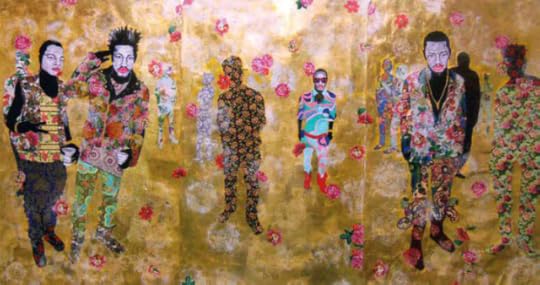 Ebony G. Patterson -- Untitled Lightz I, 2013, mixed media on paper, 81 x 148 inches.White Lies and White Lights-- a Review of Shine: The Visual Economy of Light in African Diasporic Aesthetic Practiceby Shakeel Harris | NewBlackMan (in Exile)
Ebony G. Patterson -- Untitled Lightz I, 2013, mixed media on paper, 81 x 148 inches.White Lies and White Lights-- a Review of Shine: The Visual Economy of Light in African Diasporic Aesthetic Practiceby Shakeel Harris | NewBlackMan (in Exile)Light conventionally has a way of exposing and making one aware in spaces of darkness. Krista Thompson’s Shine: The Visual Economy of Light in African Diasporic Aesthetic Practice (Duke University Press) analyzes and ultimately critiques the relationship that light has with Black bodies throughout the African diaspora. Utilizing case studies found in Jamaica, the Bahamas and America, Thompson argues that light wielded by subjugated Black bodies contributes to their increased albeit problematic visibility. Thompson’s work implicitly suggests that the Black body’s fascination and subjugation of light translates directly to its political struggle with whiteness itself.
“Visual technologies...are central among African diasporic communities.”[i] Black people and modern technologies of the visual are inseparable. Thompson astutely uncovers the origins of this bond by evoking images of the western, capitalist project’s earliest encounters with Black bodies and its emphasis on (visual) aesthetic appeal . Moreover, prior to slave transactions, “slave traders actually greased the bodies of enslaved Africans, using sweet oil or greasy water...Many buyers’ assessments of slaves came through visual inspection in the pens.”[ii] That Black people have a foundational template in interacting with whites that grounds their value in the visual is a fact that cannot be overstated and that frankly haunts the Black world today. Commodification was the birthing canal that brought Black bodies into the white, western world. And its legacies will not be severed anywhere in the near future. Thompson’s work begins by literally taking it to the streets. Street photography in America and the Caribbean and their constitutive aesthetic choices translate to the Black working class’s relationship with white society. In countless street photography backdrops images of material wealth and exotic locations abound. Thompson asserts, “[B]lack urban populations use these contemporary picturing practices to present, indeed to emblazon, their images of personhood, prestige, and pictorial immortality.”[iii] Lurking behind innumerable images of opulent sports cars, glimmering rims and supersized bottles of liquor is the signification by the Black working class on the capitalist system. “These supersized representations of consumer products, which appear like architectural structures, give visual form to their overblown exchange value.”[iv]
Images of backdrops not only operate as a signifying space, they serve the additional purpose of establishing Black boundaries and ‘legitimate’ gender performance. Black women use this space to “reanimate the objectifying poses seen in [Hip-Hop] videos, they also arrange their bodies in certain formations to affirm their connection to each other through shared gestures and clothing.”[v] As for the Black men, they tend to “stare directly at the photographer, their heads slightly elevated and tilted to the side, their arms folded protectively and assertively across their chests.” [vi] In addition to critiquing capitalism and erecting gender roles, backdrops ultimately toy with time and space. Images of the dead and elaborate portraits of cities like New York allow Black bodies to undermine death and/or the lack of financial means needed to travel to the cities with which they are pictured. After leaving the streets Thompson makes a daring getaway to the land of Jamaica. Traversing the dancehalls of Jamaica, Thompson discovers that local patrons often “vie to be illuminated by the camera’s bright white light, which can be seen and felt as it saturates the visual senses of congregants.”[vii] This space is nothing more than a proverbial boxing ring in which the winner is awarded attention by whiteness. It is in white light that dancehall frequenters attempt get to reveal another version of themselves. Accustomed to living lives in which they are socially invisible, these light-hungry participants go so far as to bleach their skin so that their skin will have a certain aesthetic appeal on camera. “Video light and skin bleaching are expression[s] that relate to these social practices of seeking visibility and recognition as citizens in [B]lack public spheres in Jamaica and beyond…”[viii] The prevalence of the these practices cannot be discussed without bringing the impact of economic policies into the conversation.
As Thompson acknowledges, the neoliberal policies implemented by the Jamaica Labour Party “intensified the implementation of structural adjustment policies” and ignited a “fascination with consumer culture in the dancehalls [in] line with the changing neoliberal landscape of the island…”[ix] The blinding white light of lurching cameras in Jamaican dancehalls invites Black bodies into the realm of illumination—an invitation they seemingly cannot refuse. While others may interpret the Black chase after whiteness (light) and bleaching of the skin as immense self-hate, Thompson argues that bleaching “the body’s surface has been interpreted as a response to the cultural memory of skin color prejudice, or colorism [which] privilege[s] whiteness…”[x]
This light that Black bodies crave in Jamaica ultimately “transform[s] them into commodities that could be sold locally and transnationally.”[xi] Social ascendance is tethered to being aesthetically appealing (brighter, whiter) on video camera much like passing has been for ‘fair’-skinned Blacks in American history. Bahamian Blacks are also guilty of being enamored by white ways of living and being. The young Jamaican girls mimicking the “female-choreographed performance of rescue and romance,”[xii] found in many fairy tales, in their extremely visible (conspicuously consumptive) prom entrances serve as but one example.
The African diasporic community’s investment in brightness and visual practices that have been shrouded and made synonymous with ‘Hip-Hop culture’ (which have really been around since at least the days of King Henry VIII[xiii] and “seventeenth-century Baroque pictorial traditions”[xiv]) have been given mythic origins by white, hegemonic forces. Fascination with “bling, bling” and material excess is not a Black phenomena. Furthermore, the perceived investment that Black bodies feel they have in bling-age directly correlates with the oft-sighted (and ill-fated) Black investment in whiteness and white consumption practices to feel seen and heard.
+++ Shakeel Harris is an M.Div candidate at Duke Divinity School where he focuses on the intersectionality of Christianity and American slavery. He holds a B.A. in Political Science from the University of North Carolina at Chapel Hill.
[i] Krista Thompson, Shine: The Visual Economy of Light in African Diasporic Aesthetic Practice (Durham: Duke University, 2015), 2. [ii] Ibid., 233. Emphasis added. [iii] Ibid., 49. [iv] Ibid., 57. [v] Ibid., 65.[vi] Ibid., 67. [vii] Ibid., 113. [viii] Ibid., 115. [ix] Ibid., 120. [x] Ibid., 141. [xi] Ibid., 149.[xii] Ibid., 184. [xiii] Ibid., 230. [xiv] Ibid., 258.
Published on December 03, 2017 05:35
December 1, 2017
2017 Trinity Distinguished Lecture: "My Mother Gave Me This Big-Ass Name" -- A Black Scholar in the Mix
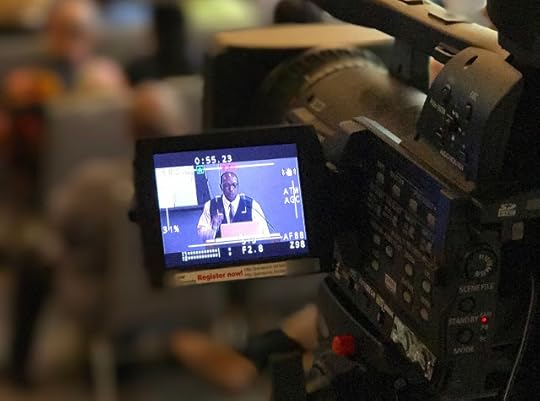 'Mark Anthony Neal, a professor in the departments of African & African American Studies and English at Duke University, gave the inaugural Trinity Distinguished Lecture on Thursday, May 4, 2017. The the lecture, "My Mother Gave Me This Big-Ass Name" was inspired by Neal's relationship with his late mother, who encouraged him at a very young age to embrace all three of my names—even to the point of her being conscious that his three names spelled out the acronym MAN. Neal is introduced by Dr. Valerie Ashby, the Dean of the Trinity School of Arts & Sciences at Duke University.'
'Mark Anthony Neal, a professor in the departments of African & African American Studies and English at Duke University, gave the inaugural Trinity Distinguished Lecture on Thursday, May 4, 2017. The the lecture, "My Mother Gave Me This Big-Ass Name" was inspired by Neal's relationship with his late mother, who encouraged him at a very young age to embrace all three of my names—even to the point of her being conscious that his three names spelled out the acronym MAN. Neal is introduced by Dr. Valerie Ashby, the Dean of the Trinity School of Arts & Sciences at Duke University.'
Published on December 01, 2017 18:06
November 30, 2017
A Joy and a Fire: Gaye Theresa Johnson and Alex Lubin on the Power and Possibility of Black Radical Thought
 'Gaye Theresa Johnson and Alex Lubin explore the power and possibility of Black radical thought - as a site of resistance against racial capitalism, as a blueprint for alternative ways of organizing in the face of oppression, and as a deep pool of knowledge and experience to draw from in the present and future fight against White supremacy and all forms of oppression. Johnson and Lubin edited and contributed to the essay collection Futures of Black Radicalism.' (Verso)
'Gaye Theresa Johnson and Alex Lubin explore the power and possibility of Black radical thought - as a site of resistance against racial capitalism, as a blueprint for alternative ways of organizing in the face of oppression, and as a deep pool of knowledge and experience to draw from in the present and future fight against White supremacy and all forms of oppression. Johnson and Lubin edited and contributed to the essay collection Futures of Black Radicalism.' (Verso)
Published on November 30, 2017 17:17
Gladys Mitchell-Walthour: Afro-Brazilian YouTubers and Digital Social Justice Activism
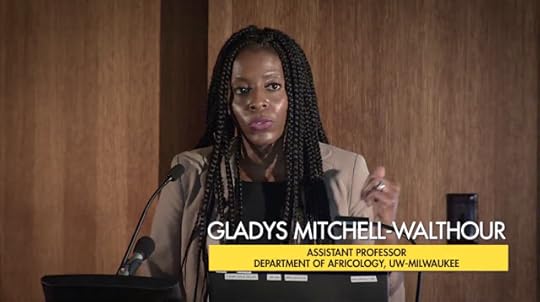 'In her lecture, Professor Gladys Mitchell-Walthour considers how YouTubers use African American leaders and media representations to examine issues relevant to black empowerment. Moreover, she examines parallel concepts in Brazil and the United States such as Black feminism, racism and sexism.' -- UW-Milwaukee
'In her lecture, Professor Gladys Mitchell-Walthour considers how YouTubers use African American leaders and media representations to examine issues relevant to black empowerment. Moreover, she examines parallel concepts in Brazil and the United States such as Black feminism, racism and sexism.' -- UW-Milwaukee
Published on November 30, 2017 16:57
"Racial justice doesn't trickle down" -- Andrea Flynn on The Hidden Rules of Race
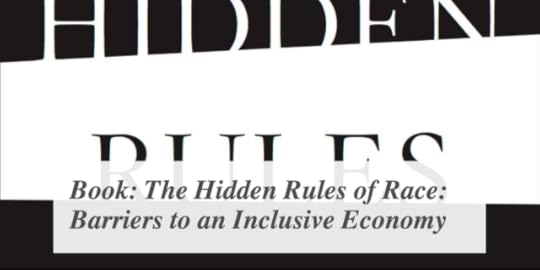 'Writer Andrea Flynn explores the persistence of hidden, racialized barriers to economic equality in the US, and explains why a 'class only' attempt to address inequality for all Americans fails to confront the legacy of systemic racism - via mass incarceration, spatial segregation and the wealth gap - blocking Black Americans from prosperity and equal access to the economy at large. Flynn is co-author of the book
The Hidden Rules of Race: Barriers to an Inclusive Economy
' (Cambridge University Press). -- This is Hell!
'Writer Andrea Flynn explores the persistence of hidden, racialized barriers to economic equality in the US, and explains why a 'class only' attempt to address inequality for all Americans fails to confront the legacy of systemic racism - via mass incarceration, spatial segregation and the wealth gap - blocking Black Americans from prosperity and equal access to the economy at large. Flynn is co-author of the book
The Hidden Rules of Race: Barriers to an Inclusive Economy
' (Cambridge University Press). -- This is Hell!
Published on November 30, 2017 16:45
TEDxDurham: Dr. Allison Mathews on Community-based Solutions to HIV Cure's Ethical Challenges
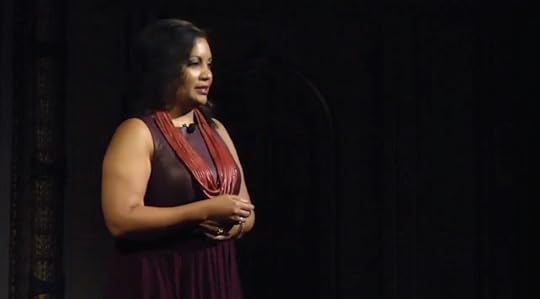 'While doctors research treatments and cures for HIV, members of our communities still deal with the stigma and everyday struggles of this deadly illness. How do we work with and care for those impacted by HIV who are still living daily with this illness? Originally from Dallas, Texas, Dr. Allison Mathews is the founder of the
2BeatHIV
project, which is a UNC Chapel Hill-based research project examining how crowdsourcing contests can be an effective community engagement tool that empowers local and global communities to shape the future of HIV cure research. The project hosts a series of crowdsourcing contests that encourage community members to use art, technology, and music to develop creative solutions to the ethical challenges of HIV cure research.' -- TEDx Talks
'While doctors research treatments and cures for HIV, members of our communities still deal with the stigma and everyday struggles of this deadly illness. How do we work with and care for those impacted by HIV who are still living daily with this illness? Originally from Dallas, Texas, Dr. Allison Mathews is the founder of the
2BeatHIV
project, which is a UNC Chapel Hill-based research project examining how crowdsourcing contests can be an effective community engagement tool that empowers local and global communities to shape the future of HIV cure research. The project hosts a series of crowdsourcing contests that encourage community members to use art, technology, and music to develop creative solutions to the ethical challenges of HIV cure research.' -- TEDx Talks
Published on November 30, 2017 16:38
TEDxDurham: Dr. Allison Matthews on Community-based Solutions to HIV Cure's Ethical Challenges
 'While doctors research treatments and cures for HIV, members of our communities still deal with the stigma and everyday struggles of this deadly illness. How do we work with and care for those impacted by HIV who are still living daily with this illness? Originally from Dallas, Texas, Dr. Allison Mathews is the founder of the
2BeatHIV
project, which is a UNC Chapel Hill-based research project examining how crowdsourcing contests can be an effective community engagement tool that empowers local and global communities to shape the future of HIV cure research. The project hosts a series of crowdsourcing contests that encourage community members to use art, technology, and music to develop creative solutions to the ethical challenges of HIV cure research.' -- TEDx Talks
'While doctors research treatments and cures for HIV, members of our communities still deal with the stigma and everyday struggles of this deadly illness. How do we work with and care for those impacted by HIV who are still living daily with this illness? Originally from Dallas, Texas, Dr. Allison Mathews is the founder of the
2BeatHIV
project, which is a UNC Chapel Hill-based research project examining how crowdsourcing contests can be an effective community engagement tool that empowers local and global communities to shape the future of HIV cure research. The project hosts a series of crowdsourcing contests that encourage community members to use art, technology, and music to develop creative solutions to the ethical challenges of HIV cure research.' -- TEDx Talks
Published on November 30, 2017 16:38
November 28, 2017
No Man's Land: Barbuda After Hurricane Irma
 'The Caribbean island of Barbuda felt the full force of Hurricane Irma. Now, a struggle to control its future is underway. On one side are Barbudans who own the land and want to preserve their unique way of life — on the other, the government and foreign investors who see opportunity in disaster.' --
New York Times Video
'The Caribbean island of Barbuda felt the full force of Hurricane Irma. Now, a struggle to control its future is underway. On one side are Barbudans who own the land and want to preserve their unique way of life — on the other, the government and foreign investors who see opportunity in disaster.' --
New York Times Video
Published on November 28, 2017 03:58
Malkia A. Cyril on Fighting for Digital Freedom
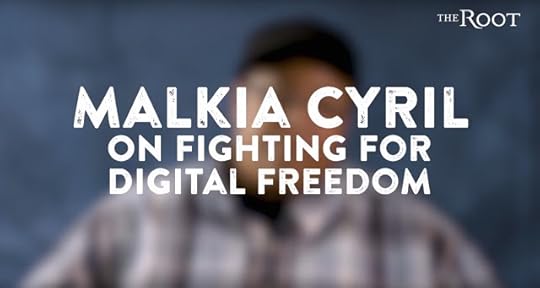 "The Internet gave us a chance a to speak truth to power"-- #TheRoot100 honoree Malkia A. Cyril is on the front line fighting for net neutrality and equal media representation. -- The Root
"The Internet gave us a chance a to speak truth to power"-- #TheRoot100 honoree Malkia A. Cyril is on the front line fighting for net neutrality and equal media representation. -- The Root
Published on November 28, 2017 03:45
November 26, 2017
Left of Black S8:E7: Professor Chad L. Williams -- World War I and the Struggle for Black Manhood
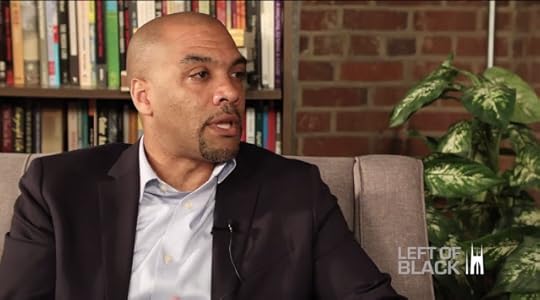 Left of Black S8:E7: Professor Chad L. Williams -- World War I and the Struggle for Black Manhood
Left of Black S8:E7: Professor Chad L. Williams -- World War I and the Struggle for Black ManhoodLeft of Black host Mark Anthony Neal sits down with historian Chad L. Williams, author of Torchbearers of Democracy: African American Soldiers in the World War I Era (UNC Press 2010). Professor Williams is Chair of the African American Studies Department at Brandeis University and co-editor (with Kidada Williams and Keisha Blain) of Charleston Syllabus: Readings on Race, Racism and Racial Violence (University of Georgia Press, 2016).
Published on November 26, 2017 17:50
Mark Anthony Neal's Blog
- Mark Anthony Neal's profile
- 30 followers
Mark Anthony Neal isn't a Goodreads Author
(yet),
but they
do have a blog,
so here are some recent posts imported from
their feed.



